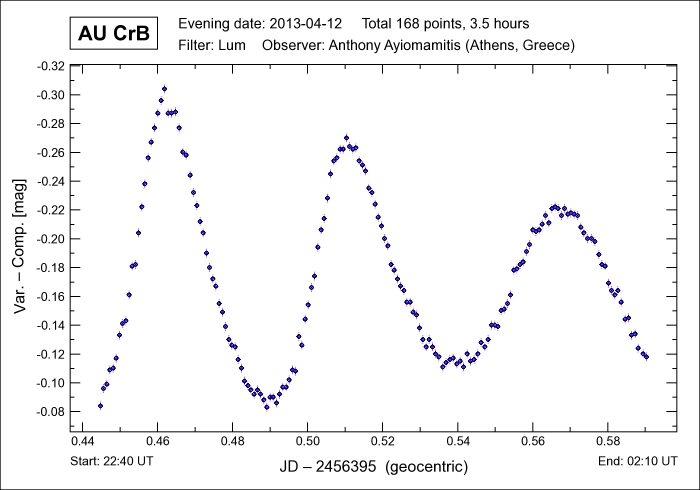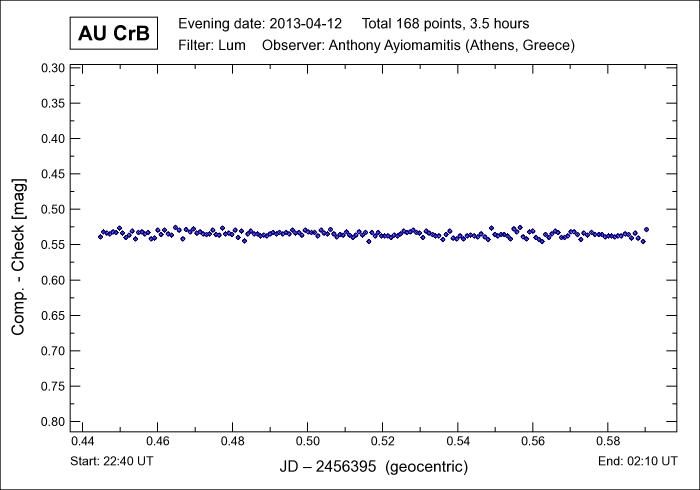
A variable star, as its name suggests, is a star whose magnitude varies intrinsically, in contrast to eclipsing binaries whose magnitude
varies as a result of one star in the binary system eclipsing the other. True variables are one of five types, namely Mira stars, semiregular
stars, cepheids, eruptive variables and, finally, cataclysmic variables. Minimum to maximum magnitude can range from days to many months with
some variables displaying irregular periods.
A popular method for the study of variable stars, particularly short-term variables, is by the use of the technique known as "differential
photometry". Rather than measure the (variable) magnitude of a variable star on an absolute scale, measurements are made over time relative to
one or more non-variable star(s) and these differences are then plotted so as to study and illustrate the relative or differential change in
magnitude. Due to the very large number of variables stars, the field of differential photometry represents one of the key fields in astronomy
whereby the amateur astronomer can make a meaningful and long-lasting contribution to both science and astronomy.
More recently, the search for extrasolar planets (over 750 discovered so far) has identified yet another interesting application for the
practice of differential photometry whereby the minute drops in magnitude of a star hosting an exoplanet are studied. Further details for the
interested party are available here.
Note: The large-amplitude short-period pulsating star AU CrB is a fast pulsating variable star with a
period of 74.4 minutes and which involves a delta mag of 0.23 (v) magnitudes during this brief time interval. AU CrB is a
delta-Scuti variable star first suspected to be variable by
Akerlof et al. in 2000 during inspection
of the Robotic Optical Transient Search Experiment I (ROTSE-I) database involving the entire northern sky. In a follow-up paper by
Wils et al, AU CrB was described as having a period much shorter than that
presented by Akerlof and for this variable to be a double-mode radial pulsator with a primary frequency at 19.335 c/d and a secondary frequency at
25.005 c/d, thus corresponding to periods of 0.0517 days and 0.0400 days, respectively.
Further details from the International Variable Star Index are available
here whereas an AAVSO finder chart is available
here.
|
Variable Star: AU CrB Other Designation: GSC 2583-0504 RA / Dec: 16h 13m 32s / +32° 34' 43" Magnitude: 12.18 - 12.31 (R) Period: 0.05172 days Variability: SXPHE(B) Comparison Star: GSC 2583:0463 Check Star: GSC 2583:0480 |
 
|
Date: Apr 13, 2013 01:40 - 05:11 UT+3 Location: Athens, Greece Equipment: AP 305/f3.8 Riccardi-Honders AP 1200GTO GEM SBIG ST-10XME SBIG CFW10 SBIG LRGB filters Integrations:
Temperatures:
Software: CCDSoft V5.00.201 AIP4Win V2.4.0 Processing: Reduction Differential Photometry |